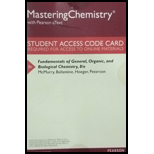
Concept explainers
(a)
Interpretation:
The given molecule is whether a carboxylic acid, an amide or an ester has to be classified.
Concept Introduction:
Carboxylic acid: One
The derivatives of carboxylic acid are ester, amide
Ester: One
Amide: One
(b)
Interpretation:
The given molecule is whether a carboxylic acid, an amide or an ester has to be determined.
Concept Introduction:
Carboxylic acid: One
The derivatives of carboxylic acid are ester, amide
Ester: One
Amide: One
(c)
Interpretation:
The given molecule is whether a carboxylic acid, an amide or an ester has to be determined.
Concept Introduction:
Carboxylic acid: One
The derivatives of carboxylic acid are ester, amide
Ester: One
Amide: One
(d)
Interpretation:
The given molecule is whether a carboxylic acid, an amide or an ester has to be determined.
Concept Introduction:
Carboxylic acid: One
The derivatives of carboxylic acid are ester, amide
Ester: One
Amide: One
(e)
Interpretation:
The given molecule is whether a carboxylic acid, an amide or an ester has to be determined.
Concept Introduction:
Carboxylic acid: One
The derivatives of carboxylic acid are ester, amide
Ester: One
Amide: One
(f)
Interpretation:
The given molecule is whether a carboxylic acid, an amide or an ester has to be determined.
Concept Introduction:
Carboxylic acid: One
The derivatives of carboxylic acid are ester, amide
Ester: One
Amide: One
Want to see the full answer?
Check out a sample textbook solution
Chapter 17 Solutions
Fund. of General, Org... -Masteringchem.
- What shape do carbohydrate chain linked with alfa (1,4) glycosidic bonds generally have ?arrow_forwardIdentify the component monosaccharides of each of the following compounds and describe the type of glycosidic linkage in each.arrow_forwardDraw condensed structural formulas for the two carboxylic acids with the molecular formula C4H8O2arrow_forward
- Write the structural formula of a triacylglycerol that contains one unit each of lauric acid, palmitic acid, and oleic acid. How many other triacylglycerols, each containing all three of these acids, are possible?arrow_forwardExplain the three-dimensional structure of a saturated triacylglycerol ?arrow_forwardCan triacylglycerols contain chiral carbon atoms? If so, which ones are chiral and how is their chirality determined?arrow_forward
- Identify the following fatty acids present in fats and oils by their common names. Which is the most abundant fatty acid? What is the general formula of a saturated fatty acid?arrow_forwardDraw the structure of a triacylglycerol whose components are glycerol and three oleic acid acyl groups.arrow_forwardWhen blood levels of glucose are higher than normal,glucose molecules react with protein side chains such as thatof lysine residues to produced glycated side chains. Explainwhy this process is dangerous. What is the name of the firstfunctional group that is formed during glycation?arrow_forward
- what are the different types of O-glycosidic linakge existing between the monomeric units of the di-, oligo-, and polysaccharides?arrow_forwardWhat structural relationship is indicated by term D glucose.?arrow_forwardIdentify the structure and function of glycogen. Which monosaccharide(s) is (are) the building block of glycogen? Where in the human body can glycogen be found?arrow_forward
 Biology Today and Tomorrow without Physiology (Mi...BiologyISBN:9781305117396Author:Cecie Starr, Christine Evers, Lisa StarrPublisher:Cengage Learning
Biology Today and Tomorrow without Physiology (Mi...BiologyISBN:9781305117396Author:Cecie Starr, Christine Evers, Lisa StarrPublisher:Cengage Learning
